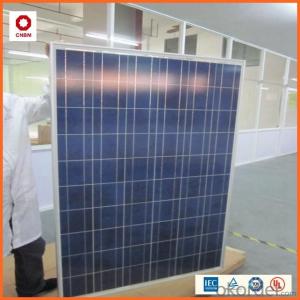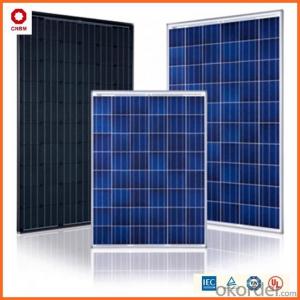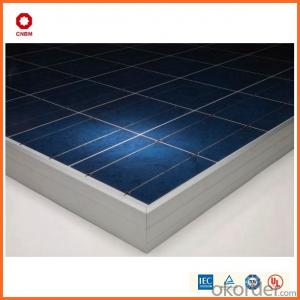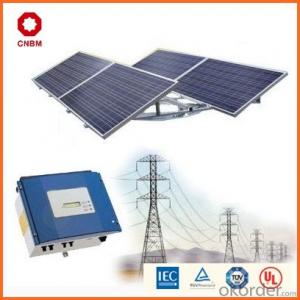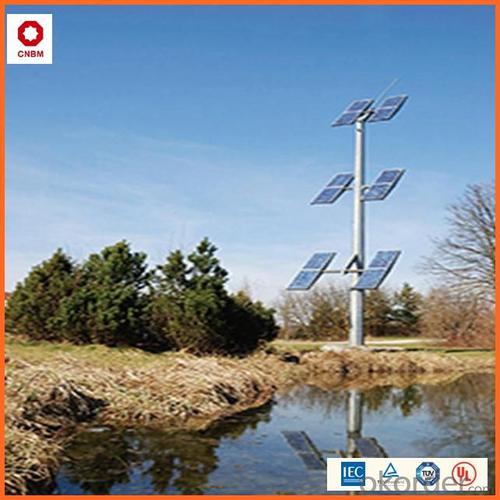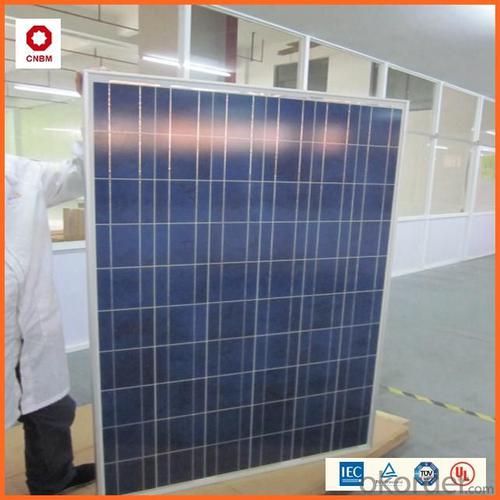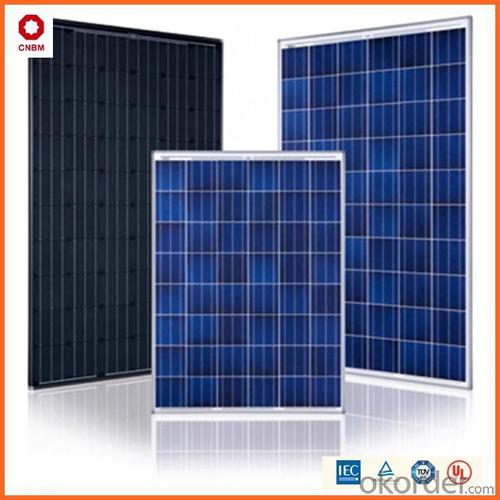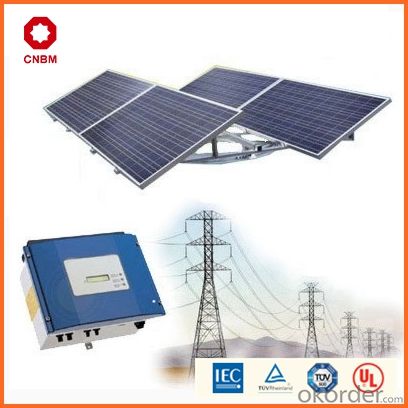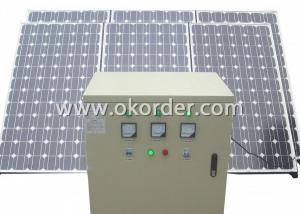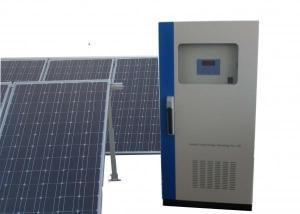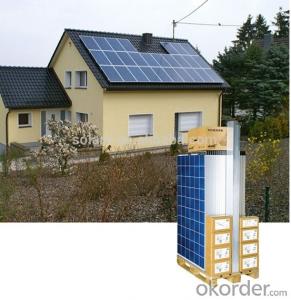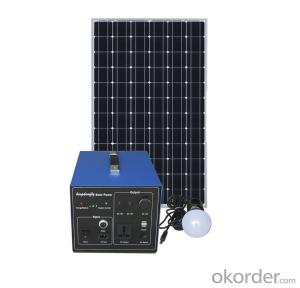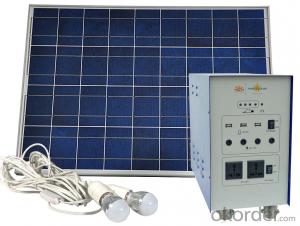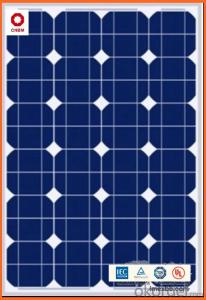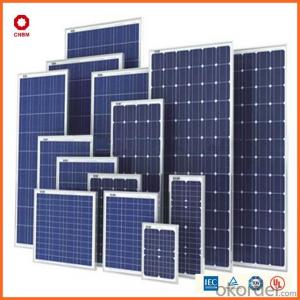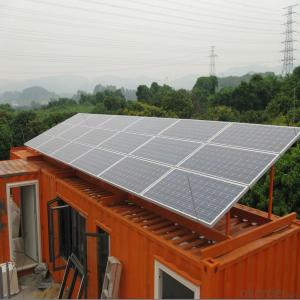Solar Energy Systems Brevard - 40w Small Solar Panels with Good Quality
- Loading Port:
- China main port
- Payment Terms:
- TT OR LC
- Min Order Qty:
- 1 watt
- Supply Capability:
- 10000000 watt/month
OKorder Service Pledge
OKorder Financial Service
You Might Also Like
Specification
Hot Sale !!! Quality and Safety of Small Poly Solar Panel 25~85w
1. Rigorous quality control meets the highest international standards.
2. High-transmissivity low-iron tempered glass, strong aluminium frame.
3. Using UV-resistant silicon.
4. IS09001/14001/CE/TUV/UL
Warranties of Small Poly Solar Panel 25~85w
1. 10 years limited product warranty
2. 15 years at 90% of the minimal rated power output
3. 25 years at 80% of the minimal rated power output
Specification
Characteristics of Poly solar panels CNBM (25-85W) | |||||
Max Power Voltage Vmp(V) | 30.3 | 30.8 | 31.1 | 31.4 | 31.85 |
Max Power Current Imp(A) | 7.60 | 7.64 | 7.73 | 7.81 | 7.85 |
Open Circuit Voltage Voc(V) | 36.1 | 36.6 | 37 | 37.3 | 37.68 |
Short Circuit Current Isc(A) | 8.50 | 8.55 | 8.65 | 8.75 | 8.85 |
Max Power Pm(W) | 230W | 235W | 240W | 245W | 250W |
Temperature Coefficient of Cells Poly solar panels CNBM (25-85W) | |
NOCT | 45± 2 |
Temperature Coeffucients of Isc | 0.0492 |
Temperature Coeffucients of Voc | -0.3374 |
Temperature Coeffucients of Voc | -0.4677 |
Mechanical Data of Poly solar panels CNBM (25-85W) | |
Dimension | 1638 × 982 × 40 mm |
Weight | 19.5 kg |
No. of Cells and Connections | 60 (6 ×10) |
Tolerance | 0 ~ + 5 W |
Cell | Monocrystalline Cell 156 × 156 mm |
Packing | 624 Pcs/40ft(H) Container |
Limits of Poly solar panels CNBM (25-85W) | |
Operating Temperature | -40 to +85 |
Storage Temperature | -40 to +85 |
Max System Voltage | 1000VDC(IEC) / 600VDC(UL) |
Features of our products:
• High conversion efficiency mono/poly-crystalline amorphous silicon solar cells
• Modules incorporate high performance bypass diodes to minimize the power drop caused by shading
• High transmittance, low-iron tempered glass
• High performance EVA encapsulant to prevent destroying and water.
• AI frame: without screw, corner connection. 8 holes on the frame can be installed easily
• Good performance of preventing from atrocious weather such as wind and hails
• Certifications: CE IEC TUV VDE UL, Class I
• 10 years 90% power output warranty
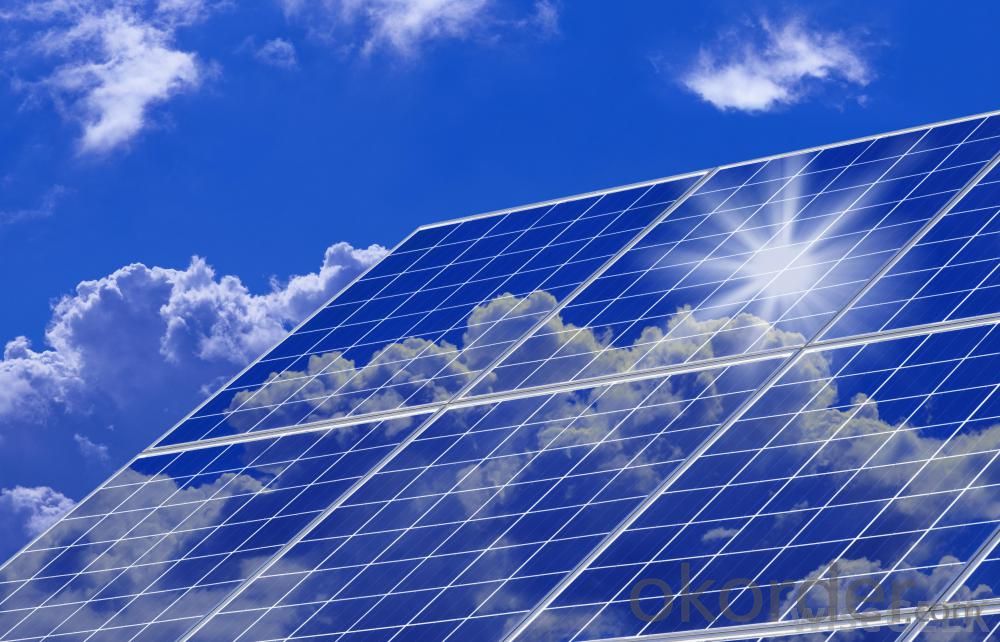
Shipping of Small Poly Solar Panel 25~85w
By Sea | Delivery from Shanghai or Ningbo seaport |
By Air | Departure from Shanghai Pudong Airport |
By Express | Post by DHL, EMS, UPS, TNT. |
- Q: Are there any disadvantages to using solar energy systems?
- Yes, there are a few disadvantages to using solar energy systems. Firstly, the initial installation cost of solar panels and equipment can be relatively high, making it less affordable for some individuals or businesses. Additionally, solar energy generation is dependent on sunlight availability, meaning that energy production may vary depending on weather conditions or geographic location. Finally, the storage of excess energy can be challenging, as efficient and cost-effective battery storage technology is still developing. However, despite these drawbacks, the long-term benefits, such as cost savings, reduced environmental impact, and energy independence, make solar energy systems a sustainable and promising option.
- Q: What is the lifespan of solar batteries used in solar energy systems?
- The lifespan of solar batteries used in solar energy systems typically ranges from 5 to 15 years, depending on various factors such as the type of battery, usage patterns, maintenance, and environmental conditions.
- Q: How does the efficiency of solar panels affect a solar energy system?
- The efficiency of solar panels directly impacts the overall performance and cost-effectiveness of a solar energy system. Higher efficiency panels can generate more electricity from the same amount of sunlight, allowing the system to produce more power. This can result in a higher return on investment and shorter payback periods. Additionally, more efficient panels require less space, making them suitable for installations where space is limited. Conversely, lower efficiency panels may require more space and installation costs to achieve the desired energy output. Therefore, the efficiency of solar panels plays a crucial role in optimizing the performance and economic viability of a solar energy system.
- Q: Can solar energy systems be used in powering outdoor signage or billboards?
- Yes, solar energy systems can be used to power outdoor signage or billboards. Solar panels can be installed on the structures and absorb sunlight to generate electricity, which can then be used to power the signage or billboards. This reduces the reliance on traditional energy sources and helps to make outdoor advertising more sustainable.
- Q: Can solar energy systems be used in areas with limited access to solar batteries?
- Yes, solar energy systems can still be used in areas with limited access to solar batteries. While solar batteries are commonly used to store excess energy generated by solar panels, they are not essential for the operation of solar energy systems. In such areas, solar energy can be directly consumed during daylight hours, providing a sustainable and renewable source of electricity. However, without batteries, the energy supply may be intermittent or limited to daytime usage only.
- Q: How do solar energy systems impact water resources?
- Solar energy systems have a minimal impact on water resources compared to other forms of energy production. Unlike traditional power plants that require large amounts of water for cooling, solar power generation does not consume water during operation. This reduces water stress, preserves aquatic ecosystems, and ensures the availability of clean water for other uses like agriculture and drinking. However, the manufacturing process of solar panels and other components might require water, but it is generally much lower compared to the water usage of conventional energy sources. Overall, solar energy systems contribute positively to water conservation and sustainability.
- Q: Can solar energy systems be installed on all types of roofs?
- Yes, solar energy systems can be installed on most types of roofs, including flat, sloped, and even curved roofs. However, the suitability of the roof for solar installation may depend on factors such as its orientation, shading, structural integrity, and available space. It is recommended to consult with a professional solar installer to assess the feasibility of installing solar panels on a specific type of roof.
- Q: What is a photovoltaic (PV) system?
- A photovoltaic (PV) system is a technology that converts sunlight into electricity. It consists of solar panels made up of photovoltaic cells, which generate direct current (DC) electricity when exposed to sunlight. This DC electricity is then converted into alternating current (AC) electricity using an inverter, making it suitable for use in homes, businesses, and even large-scale power plants. PV systems are a sustainable and renewable energy solution that helps reduce dependence on fossil fuels and mitigate climate change.
- Q: Can a solar energy system be used in areas with high levels of pollution from industrial activities?
- Solar energy systems can still function in heavily polluted areas caused by industrial activities. Although pollution can affect the efficiency of solar panels, it does not render them completely useless. Even in polluted areas, solar panels are capable of generating electricity, albeit with a slight decrease in performance. It is important to consider the specific type and concentration of pollutants in the air, as this will determine the extent to which solar panel efficiency is impacted. Certain pollutants, like particulate matter or smog, can cast shade or reduce the amount of sunlight that reaches the solar panels, leading to a decrease in output. Additionally, pollutants can accumulate on the surface of the panels over time, resulting in lower efficiency. However, regular maintenance and cleaning of the solar panels can help mitigate the effects of pollution. By ensuring that the panels are kept clean and free from debris or pollutants, their efficiency can be maintained at optimal levels. Implementing cleaning schedules and utilizing advanced cleaning technologies can minimize any potential losses in electricity generation caused by pollution. Furthermore, advancements in solar technology and panel design have made them more resistant to various environmental factors, including pollution. Manufacturers are continuously improving the durability and resistance of solar panels to external influences, enabling them to perform better in polluted environments. In conclusion, solar energy systems can still be effectively utilized in areas with high pollution levels from industrial activities. Regular maintenance, cleaning, and technological advancements can help minimize any potential losses and ensure efficient electricity generation from solar panels.
- Q: Can solar energy systems be installed in areas with high snowfall?
- Yes, solar energy systems can be installed in areas with high snowfall. While snow can temporarily reduce the efficiency of solar panels by covering them, it is still possible to generate electricity from solar energy during winter months. Additionally, advancements in technology have led to the development of snow-shedding designs and tilt systems that can help minimize snow accumulation on panels. Regular maintenance and cleaning can further optimize the system's performance in snowy conditions.
Send your message to us
Solar Energy Systems Brevard - 40w Small Solar Panels with Good Quality
- Loading Port:
- China main port
- Payment Terms:
- TT OR LC
- Min Order Qty:
- 1 watt
- Supply Capability:
- 10000000 watt/month
OKorder Service Pledge
OKorder Financial Service
Similar products
Hot products
Hot Searches
Related keywords

